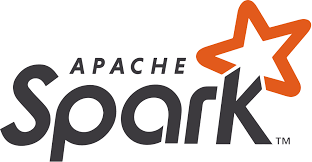In the world of big data processing and analytics, choosing the right programming language is crucial for efficient data management and effective decision-making. Python and Scala are two popular programming languages used in data science projects and processing, each with its unique strengths and features. This article will explore the key differences between Python and Scala, and how their integration with Apache Spark can help you make a more informed choice for your data processing needs.
Overview of Python and Scala
Python is an open-source, high-level, general-purpose programming language known for its readability and simplicity. It has a large and active community, and it is widely used in various domains, including web and software development, scientific computing, and artificial intelligence.
Scala, on the other hand, is a statically typed, high-level language that combines object-oriented and functional programming paradigms. Designed to run on the Java Virtual Machine (JVM), Scala is highly a scalable language known for its strong type system, which helps in catching errors at compile-time.
What is Python?
Python, created by Guido Rossum, is an object-oriented, high-level programming language that emphasizes code readability. Known for its easy-to-learn syntax, it has become one of the most widely used languages in data science and web development fields.
Python offers dynamic typing and binding, making it a dynamic language attractive for Rapid Application Development. It has an extensive range of libraries for data science, machine learning, and natural language processing (NLP). The language boasts strong community support, which ensures continuous development and improvement of functional language.
Python in the Apache Spark framework
PySpark is the Python API for Apache Spark, allowing developers to use Python for big data processing. The Python language’s simplicity and readability make it an appealing choice for beginners working with Spark. However, the Python language’s performance in Spark can be a concern, especially when using user-defined functions (UDFs) that require data serialization between Python and the JVM.
What is Scala?
Scala, a compiled language designed by Martin Odersky, is an object-oriented programming language that also supports functional programming. Scala gets its name from a combination of the words ‘scalable’ and ‘language,’ highlighting its ability to scale according to the number of users and size of the project.
As a statically typed language, Scala offers better performance and scalability compared to Python. It is known for its support of robust and concurrent systems and has strong integration with Java, making it a popular choice for large-scale projects.
Scala in Apache Spark
Scala is the native language of data analytics for Apache Spark, meaning it has seamless integration with the framework. The high-performance systems and advantages of Scala make it a popular choice for building high-performance, large-scale data processing applications with Spark.
Python vs Scala: Comparing Key Differences
Typing: Dynamic (Python) vs Static (Scala)
One of the key differences between Python and Scala lies in their typing systems. Python employs dynamic typing, which allows for greater flexibility during coding, as the type of a variable can change at runtime. However, this flexibility can also result in potential runtime errors that are difficult to predict and debug.
In contrast, Scala utilizes static typing, which requires the programmer to declare the type of a variable during coding. This system offers better error checking during the compilation process, reducing the likelihood of runtime errors. Additionally, static typing can lead to improved performance, as the compiler can optimize the source code more effectively.
Performance and speed
When it comes to performance, Scala generally outperforms Python due to its JVM (Java Virtual Machine) support. This results in faster execution times and more efficient use of system resources. However, Python’s performance should not be underestimated. With careful optimization and the use of specific libraries, the Python interpreter can perform equally well in certain scenarios.
Syntax and ease of learning
Python’s syntax is simple, clear, and easy to learn, making it an ideal choice for beginners or those looking for a user-friendly programming language. In contrast, Scala’s syntax is more complex and requires a steeper learning curve. This complexity can be advantageous for experienced programmers who prefer functional languages with a more sophisticated and expressive syntax but may prove challenging for newcomers.
Community support and libraries
Python boasts a large and active community that has developed a vast range of libraries, particularly in the areas of data science and machine learning. This extensive library support makes Python a versatile and powerful choice for various applications. Scala’s community is smaller in comparison, but it is steadily growing. It offers robust support for concurrent and distributed systems, making it an excellent choice for large-scale, high-performance applications.
Suitability for different project scales
Python is well-suited for small- to medium-sized projects, thanks to its simplicity, flexibility, and ease of use. Its extensive library support allows developers to quickly prototype and deploy applications, making it ideal for startups and smaller teams. Scala, on the other hand, excels in large-scale, robust applications that require high levels of performance and scalability. Its static typing and support for concurrent programming make it a powerful choice for handling complex, resource-intensive tasks.
Use cases in Apache Spark
- Python is recommended for beginners, data engineering roles, and small- to medium-sized projects.
- Scala is ideal for large-scale, high-performance applications and is well-suited for big data programmers and developers already familiar with Java.
Integration with Apache Spark

Apache Spark is an open-source, distributed computing system designed for fast and efficient data processing. It supports multiple languages, including Python, Scala, Java, and R. This allows developers to leverage the capabilities of Spark, irrespective of their choice of programming language.
Spark provides APIs for both Python (PySpark) and Scala, enabling developers to process large datasets in parallel. While Scala’s native support for Spark may provide a better performance, the gap has been significantly reduced with recent improvements to PySpark. In this section, we will explore the technical reasons behind Scala’s performance advantage and how the Python code has narrowed the gap.
Scala’s Native Support for Spark
Scala’s native support for Spark stems from the fact that Spark itself is written in Scala. Consequently, the Spark core libraries are designed and optimized to work seamlessly with Scala code. This means that when you use Spark’s Scala API, you are directly interacting with Spark’s core libraries, which results in better performance and seamless integration.
On the other hand, PySpark, the Python API for Spark, is essentially a wrapper around the Spark core libraries. As a result, when using PySpark, there is an additional layer of abstraction, which can lead to some performance overhead.
JVM and Static Typing
Scala is a statically typed language that runs on the Java Virtual Machine (JVM), which offers several performance advantages. The JVM can leverage Just-In-Time (JIT) compilation and other optimizations to improve execution times. Additionally, Scala’s static typing allows the compiler to catch potential errors during compile-time, reducing the likelihood of runtime errors and improving overall performance.
Python, in contrast, is a dynamically typed, interpreted language. This means that type checking occurs at runtime, which can lead to slower performance compared to statically typed languages like Scala.
Tungsten and Catalyst Optimizations
In recent years, the Spark project has introduced significant optimizations such as Project Tungsten and the Catalyst query optimizer. These optimizations aim to improve Spark’s performance, memory usage, and CPU efficiency.
While these optimizations benefit both PySpark and Scala users, they are primarily designed and implemented in Scala. As a result, Scala users may experience a more significant performance boost compared to PySpark users, due to the closer integration with Spark’s core libraries and optimizations.
Bridging the Gap: PySpark Improvements
Despite Scala’s inherent performance advantages, PySpark has made substantial strides in recent years to narrow the performance gap. The introduction of Arrow, a high-performance, in-memory columnar data format, has significantly improved the performance of PySpark when working with large datasets.
Arrow allows for efficient data interchange between the JVM and Python processes, reducing the overhead associated with data serialization and deserialization. This, in turn, has helped improve the performance of PySpark applications, making it a more viable option for big data analysis and processing tasks.
Choosing the Right Language for Apache Spark
Factors to consider when choosing a language
- Skillset and proficiency: Choose the language that you or your team is most proficient in.
- Project requirements and goals: Determine which language offers the best support for your specific needs.
- Library support and capabilities: Evaluate the available libraries for each language and their relevance to your project.
- Performance implications: Consider the performance characteristics of each language and how they may impact your project.
Tips for making a decision
- For beginners with no prior programming experience, Python is a great choice due to its simplicity and ease of learning.
- For those with programming experience, particularly in Java, Scala may be a more familiar and suitable option.
- If your project requires complex, concurrent systems and high-performance processing, Scala may be the better choice.
- For data science-oriented use cases, Python and R offer a wide range of libraries and tools, making them excellent choices.
- Keep in mind that you don’t have to stick to just one language throughout your project. You can divide your problem into smaller parts and utilize the best language for each particular task, balancing performance, skillset, and problem requirements.
Conclusion
In conclusion, both Python and Scala offer unique advantages and capabilities when it comes to big data processing and analytics. The choice between these languages largely depends on your project’s specific requirements, performance goals, and the expertise of your development team. Python’s simplicity, extensive library support, and ease of learning make it an excellent choice for small- to medium-sized projects, while Scala’s performance, strong type system, and scalability make it a powerful option for large-scale, resource-intensive applications. Ultimately, understanding the strengths and weaknesses of each language will help you make a more informed decision for your data processing needs.














 +1 (888)
413 3806
+1 (888)
413 3806